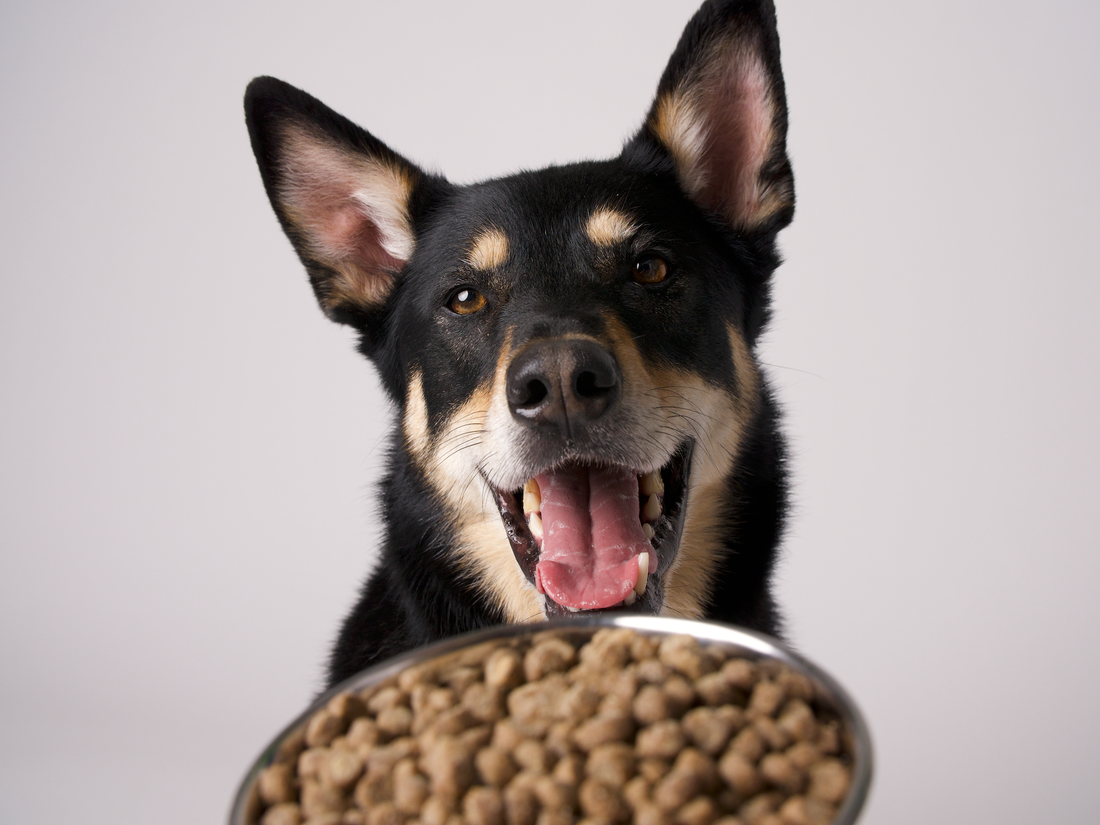In 1956, the invention of “kibble” revolutionized the dog food industry. Prior to this, dogs were fed table scraps.
To create “Kibble”, a brand-new technique called “extrusion” was used. Extrusion is a process by which many ingredients (including meats, grains, vegetables, vitamins, minerals and more) are combined and cooked at high temperatures to remove moisture before being pushed through a machine to create small bite size pieces of food known as kibble.
With its long shelf life, ease of storage, and obvious convenience, it’s not surprising that kibble quickly became the most popular option for pet owners, paving the way for the thriving and very lucrative pet food industry we see today.
The Evolution of Kibble
Between 1980 and the early 2000’s the pet food industry was growing fast, and becoming saturated with new companies.
As a result, many companies sought ways to decrease production costs in order to remain competitive.
The quick and easy solution was to source lower quality ingredients and add more fillers, along with artificial flavors to enhance taste, and harmful preservatives to extend shelf-life.
But ultimately, this came at a different cost; one that compromised the health of pets.

In more recent years, the industry trend has shifted to the importance of all-natural, healthy dog foods, and anyone who has taken the time to research them knows, it can be quite overwhelming!
We can now provide our dogs with food that has been specially formulated for age, energy level, various health conditions, and even specific breeds.
Ingredients to Avoid in Kibble
Fillers
While many kibble products use foods like corn, wheat, soy, potato, beet pulp, and more, it’s not actually the ingredients themselves that affect the over-all quality of the food, nor does it necessarily mean the food is high in fillers.
It’s important to remember that dogs require a balanced combination of proteins, carbohydrates, fats, vitamins, and minerals in order to provide optimal daily nutrition.
So, while the quality of ingredients that go into a kibble is important, considering the ratio and combination of those ingredients, is equally important.
By Products
Just the word, “by-product” has a negative connotation for many pet owners.
A “by-product” refers to any part of an animal that is left over, and often not sold for “human consumption.” And while there are some companies that use by-products that lack any nutritional value, the reality is that most reputable companies use animal organ by-products that are rich in vitamins and minerals to promote a healthy and balanced diet.
While “fillers and by-products” often get the most attention, there are far more dangerous ingredients that all pet owners should be aware of…
Artificial Preservatives
Sadly, harmful chemicals are still commonly used in some pet products to extend shelf life.
Before purchasing a pet food product, be sure to check for any of the following dangerous chemicals, especially the top 3 on this list, all of which have been known to cause cancer:
- BHA
- BHT
- ETHOXYQUIN
- PROPYL GALLATE
- PROPYLENE GLYCOL
- SODIUM NITRATE
Essential Ingredients Found in High-quality Kibble
Lean Protein
Fish tops the list for the highest amount of lean protein, with “fish meal” being the best option.
But if you are like me, you were told “meat meal” is bad, which surprisingly, is not true. It turns out that meat meal in dog food actually provides more protein than the actual meat itself!
This is because pet food packaging ingredients are listed in order of weight, and being a powder, meat meal weighs less than meat containing water, despite having a higher protein content.
Healthy Carbs
Barley, oats, brown rice, sweet potatoes, quinoa, sorghum, teff, and millet.
Fruits and Vegetables
Apples, blueberries, carrots, spinach, sweet potatoes, peas, and broccoli.

Healthy Fats
Omega 3 fatty acids such as Salmon and Flaxseed oil.
Vitamins and Minerals
Vitamin A, vitamin K, vitamin D, and vitamin E, along with phosphorus and calcium.
Natural Preservatives
Ascorbic acid (vitamin C), mixed tocopherols (vitamin E), and rosemary.
Natural Additives
There are some great products available that offer kibble coated in healthy additives, including bone broth, salmon oil, probiotics, and even bacon fat for dogs that are picky eaters!
If you are looking for a kibble that focuses on healthy digestion and also tastes great, try our kibble coated with probiotics and bone broth! Probiotics promote immune health by normalizing the digestive system, and bone broth adds nutrients to support joint health, while also enhances flavor.

When deciding on a healthy diet for our dogs, it’s our job to read the labels, consult our vets, and do the research needed to choose a high-quality kibble that meets the nutritional needs of our dogs.
Products related to this article:
Every Sale Supports a Shelter Pet. Learn More.
Created in Vermont. Learn More.
If you suspect your pet is sick, call your vet immediately. For health-related questions, always consult your veterinarian, as they have examined your pet, know the pet's health history, and can make the best recommendations for your pet.




